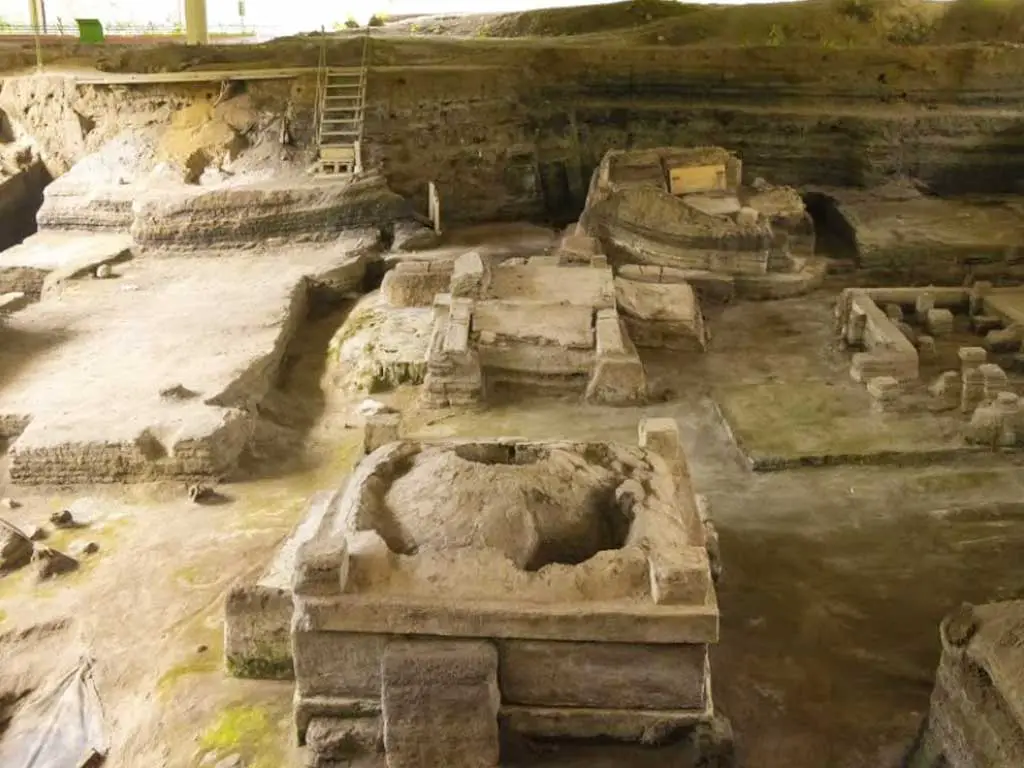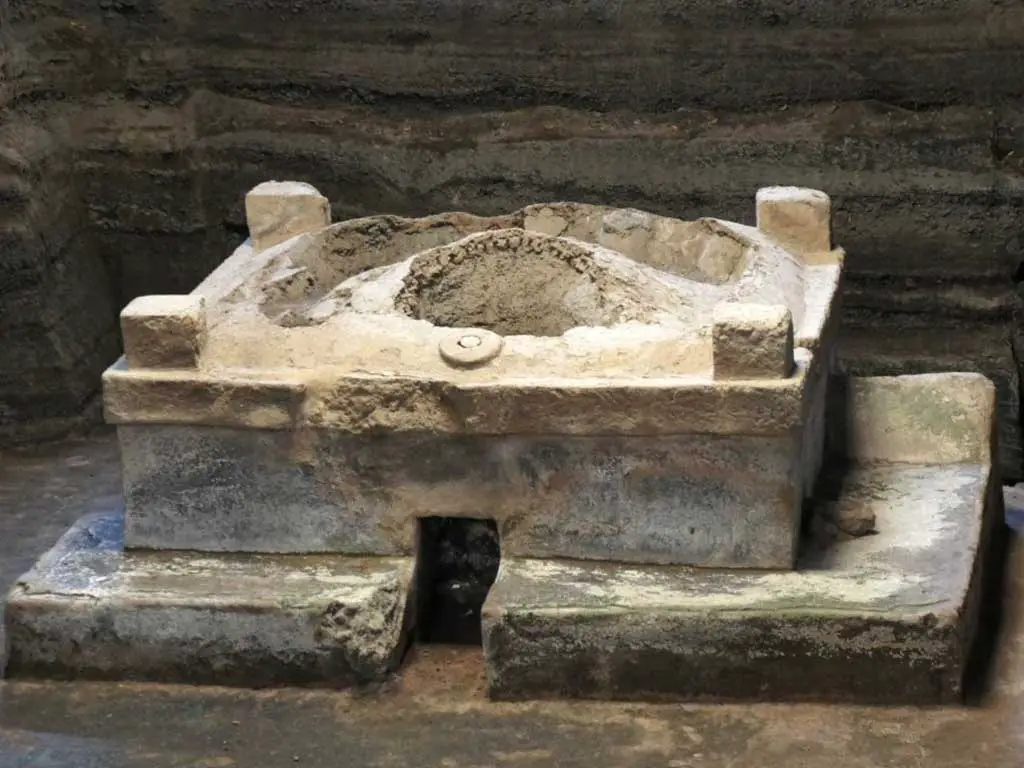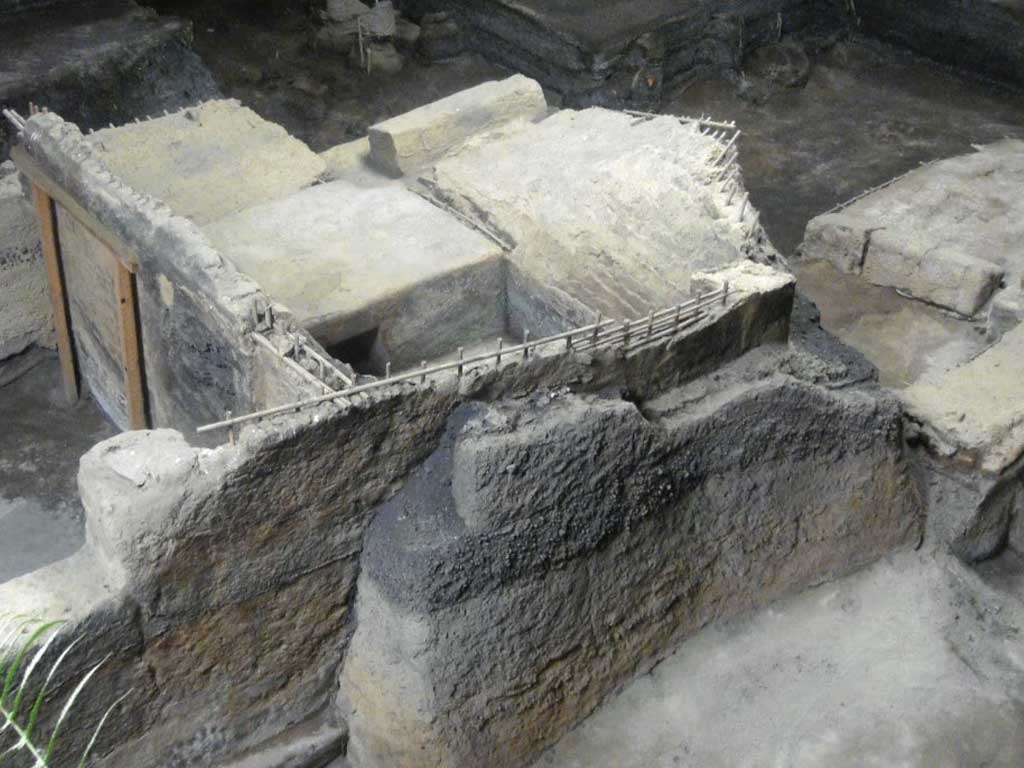El Salvador, nestled in the heart of Central America, boasts a cultural gem that has earned it the moniker “Pompeii of Latin America.”
Renowned for its rich history and archaeological marvel, Joya de Cerén stands as a testament to the resilience of the ancient Maya civilization.
Situated in the Zapotitán Valley, just 36 kilometers northwest of the capital, San Salvador, this archaeological site has been aptly compared to the famed ruins of Ancient Rome.
The title “Pompeii of the Americas” stems from its remarkable preservation, offering a rare glimpse into the daily lives of the Central American populace during the Classic period, encapsulating a moment frozen in time beneath layers of volcanic ash.

Which Latin American Country Is Referred to as the Pompeii?
The country known as the “Pompeii of Latin America” is El Salvador. The title is attributed to the ancient Maya site of Joya de Cerén, located in the Zapotitán Valley, 36 kilometers northwest of San Salvador.
Joya de Cerén is often referred to as the “Pompeii of the Americas” due to its similarity to the famed Ancient Roman ruins.
This site is known for the excellent preservation of a Classic period settlement that was rapidly buried by a volcanic eruption, similar to the fate of Pompeii and Herculaneum in Italy.
The exceptional condition of the remains at Joya de Cerén provides valuable insights into the daily lives of the Central American populations who worked the land, making it a significant cultural symbol in El Salvador.
Why Is Joya De Cerén Referred to as the Pompeii of Latin America?

Nestled in the verdant landscapes of El Salvador, Joya de Cerén stands as an archaeological marvel that transcends epochs.
This pre-Hispanic farming village, affectionately known as the “Pompeii of Latin America,” carries echoes of ancient lives preserved beneath layers of volcanic ash.
The parallels drawn with the famous Roman city, Pompeii, stem from its unique ability to offer an intimate and unparalleled look into the daily existence of the people who once called it home.
Unveiling Daily Life
What sets Joya de Cerén apart is its focus on the commonplace. In contrast to other Maya sites dominated by grandiose temples and palaces, this village invites exploration into the minutiae of life.
From the art of cooking and the intricacies of food storage to the solemnity of worship and the simple act of bathing, Joya de Cerén unveils the essence of routine, forging a profound connection with the ancient farmers who once inhabited its dwellings.
Agricultural Abundance
Joya de Cerén emerges not only as a testament to daily life but also as a testament to the agricultural prowess of its inhabitants.
The site presents a vibrant tapestry of crops and plants cultivated by the Maya, including staples like maize and beans, the richness of cacao, the versatility of manioc, and the significance of agave.
This agricultural tableau not only sustained the community but also served as a testament to the symbiotic relationship between the people and their natural environment.
Discovery and UNESCO Recognition
The accidental unearthing of Joya de Cerén in 1976 adds an intriguing layer to its narrative.
The subsequent declaration as a UNESCO World Heritage Site in 1993 acknowledges its paramount importance in Mesoamerican archaeology.
This recognition solidifies the site’s role in shaping our understanding of ancient civilizations, offering a well-preserved window into the past that continues to captivate scholars and enthusiasts alike.
How Does Joya de Cerén’s Impact Its Unesco World Heritage Status?

Nestled in the heart of El Salvador, Joya de Cerén’s preservation is not merely a local accomplishment but a global contribution to heritage.
As a UNESCO World Heritage Site, the exceptional state of conservation at Joya de Cerén allows us to unearth the layers of time and gain profound insights into the daily lives of the ancient Maya.
This unique preservation, recognized by UNESCO, elevates Joya de Cerén to a status of cultural significance that resonates far beyond the borders of El Salvador.
Preservation as a Cultural Time Capsule
The preservation of Joya de Cerén is akin to opening a cultural time capsule. Frozen in the moment of a volcanic eruption around AD 600, the site encapsulates the minutiae of daily life, offering an unparalleled glimpse into the ordinary activities of the ancient Central American population during the Classic period.
The intact structures, artifacts, and organic materials provide a tangible connection to a bygone era, preserving cultural practices and customs that would have otherwise been lost to time.
Insights into Daily Life
Unlike other archaeological sites that predominantly showcase monumental structures, Joya de Cerén places a spotlight on the everyday activities of its inhabitants.
The well-preserved remnants unveil the nuances of their customs, rituals, and interactions, fostering a comprehensive understanding of the lives of ancient Maya farmers.
This emphasis on the ordinary contributes to a more holistic interpretation of the culture and society that thrived in the region.
Cultural Criterion (iii) of UNESCO World Heritage
Joya de Cerén’s recognition by UNESCO is anchored in cultural criterion (iii). This criterion specifically acknowledges the exceptional significance of the site in representing a cultural tradition.
By providing a detailed and authentic representation of the ancient Central American populations, Joya de Cerén becomes a crucial link to our shared human heritage.
Its preservation aligns seamlessly with UNESCO’s mission to protect and celebrate the cultural diversity that enriches humanity.
Educational and Global Significance
The impact of Joya de Cerén extends far beyond the borders of El Salvador. The well-preserved site serves as an invaluable educational resource and holds global significance.
Scholars, researchers, and enthusiasts worldwide benefit from the shared knowledge derived from Joya de Cerén’s meticulous conservation efforts.
The site becomes a living classroom, fostering cross-cultural understanding and appreciation for the diverse histories that shape our world.
FAQs
What makes El Salvador the “Pompeii of Latin America”?
El Salvador earned this title due to the presence of Joya de Cerén, an ancient Maya archaeological site with remarkable preservation similar to the ruins of Pompeii in Italy.
Where is Joya de Cerén located in El Salvador?
Joya de Cerén is situated in the Zapotitán Valley, approximately 36 kilometers northwest of San Salvador, the capital of El Salvador.
What can visitors expect to see at Joya de Cerén Archaeological Park?
Visitors can explore well-preserved remnants of an ancient Maya settlement, including structures, artifacts, and insights into the daily activities of the inhabitants, frozen in time by the volcanic ash deposition.
To Recap
El Salvador, hailed as the Pompeii of Latin America stands as a cultural treasure trove with Joya de Cerén as its crown jewel.
This archaeological marvel not only showcases the architectural prowess of the ancient Maya but also provides a unique snapshot of daily life abruptly halted by volcanic forces.
The site’s comparison to Pompeii underscores its significance as a remarkably preserved time capsule, offering invaluable insights into Central American history.
As a UNESCO World Heritage site, Joya de Cerén not only contributes to the global appreciation of cultural heritage but also serves as a poignant reminder of the interconnectedness between civilizations and the enduring legacies embedded in the volcanic landscapes of El Salvador.

Leave a Reply